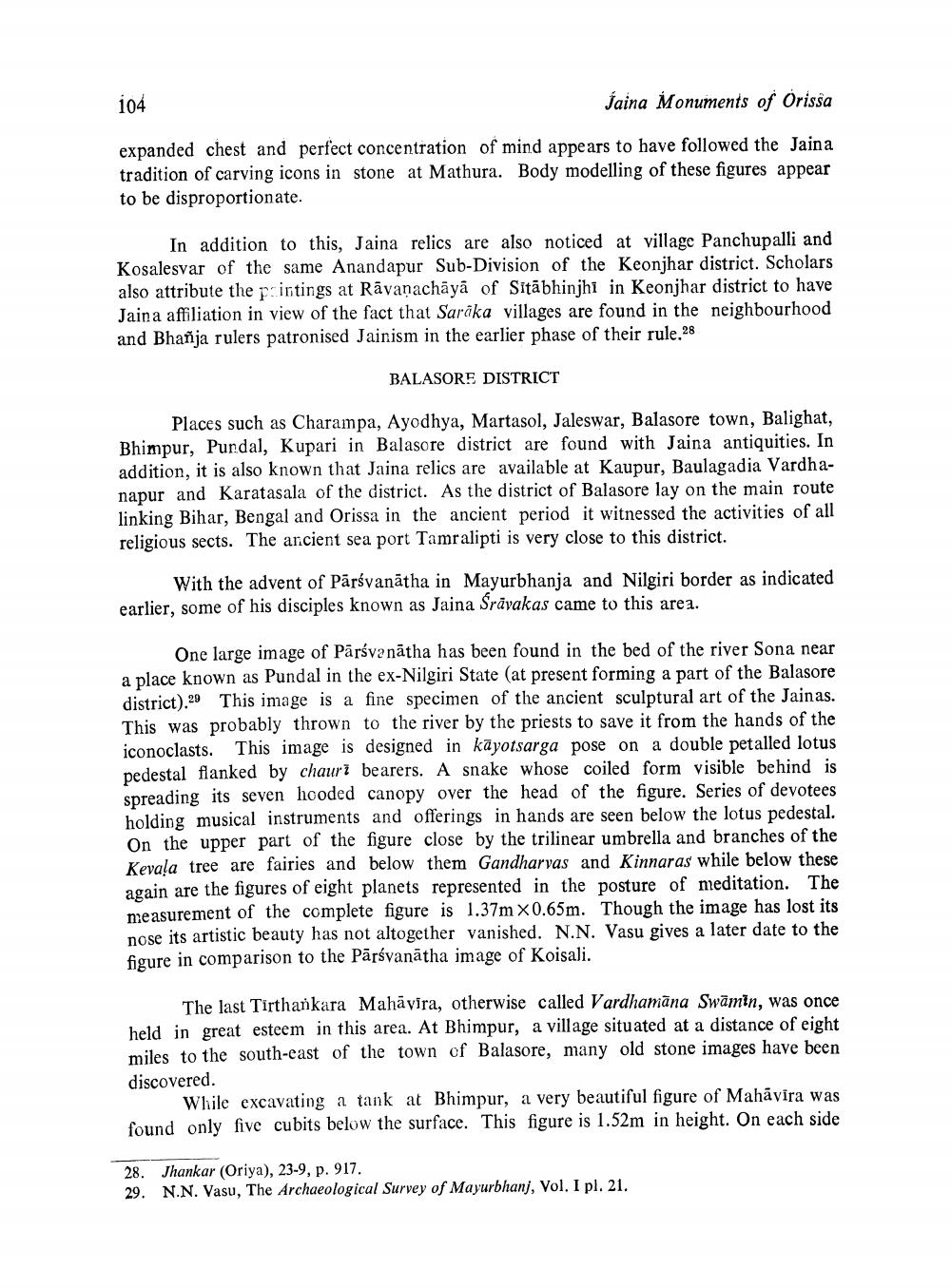________________
104
Jaina Monuments of Orissa
expanded chest and perfect concentration of mind appears to have followed the Jain a tradition of carving icons in stone at Mathura. Body modelling of these figures appear to be disproportionate.
In addition to this, Jaina relics are also noticed at village Panchupalli and Kosalesvar of the same Anandapur Sub-Division of the Keonjhar district. Scholars also attribute the paintings at Rāvanachāyā of Sitābhinjhi in Keonjhar district to have Jain a affiliation in view of the fact that Sarāka villages are found in the neighbourhood and Bhañja rulers patronised Jainism in the earlier phase of their rule.28
BALASORE DISTRICT
Places such as Charampa, Ayodhya, Martasol, Jaleswar, Balasore town, Balighat, Bhimpur, Purdal, Kupari in Balasore district are found with Jaina antiquities. In addition, it is also known that Jaina relics are available at Kaupur, Baulagadia Vardhanapur and Karatasala of the district. As the district of Balasore lay on the main route linking Bihar, Bengal and Orissa in the ancient period it witnessed the activities of all religious sects. The ancient sea port Tamr alipti is very close to this district.
With the advent of Pārsvanātha in Mayurbhanja and Nilgiri border as indicated earlier, some of his disciples known as Jaina Srāvakas came to this area.
One large image of Pārsvanātha has been found in the bed of the river Sona near a place known as Pundal in the ex-Nilgiri State (at present forming a part of the Balasore district).29 This image is a fine specimen of the ancient sculptural art of the Jainas. This was probably thrown to the river by the priests to save it from the hands of the iconoclasts. This image is designed in kāyotsarga pose on a double petalled lotus pedestal flanked by chauri bearers. A snake whose coiled form visible behind is spreading its seven hooded canopy over the head of the figure. Series of devotees holding musical instruments and offerings in hands are seen below the lotus pedestal. On the upper part of the figure close by the trilinear umbrella and branches of the Kevala tree are fairies and below them Gandharvas and Kinnaras while below these again are the figures of eight planets represented in the posture of meditation. The measurement of the complete figure is 1.37m x 0.65m. Though the image has lost its nose its artistic beauty has not altogether vanished. N.N. Vasu gives a later date to the figure in comparison to the Pārsvanātha image of Koisali.
The last Tirthankara Mahāvira, otherwise called Vardhamāna Swāmin, was once held in great esteem in this area. At Bhimpur, a village situated at a distance of eight miles to the south-east of the town of Balasore, many old stone images have been discovered.
While excavating a tank at Bhimpur, a very beautiful figure of Mahāyira was found only five cubits below the surface. This figure is 1.52m in height. On each side
28. 29.
Jhankar (Oriya), 23-9, p. 917. N.N. Vasu, The Archaeological Survey of Mayurbhanj, Vol. I pl. 21.




